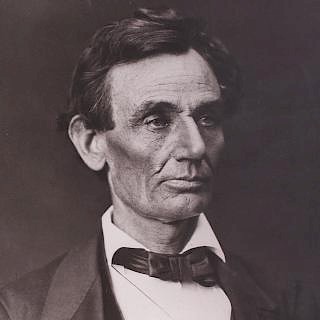Hugh Cameron, The Kansas Hermit, Family Photograph Album
About Seller
6270 Este Ave.
Cincinnati , OH 45232
United States
With offices in Cincinnati, Cleveland and Denver, Cowan’s holds over 40 auctions each year, with annual sales exceeding $16M. We reach buyers around the globe, and take pride in our reputation for integrity, customer service and great results. A full-service house, Cowan’s Auctions specializes in Am...Read more
Two ways to bid:
- Leave a max absentee bid and the platform will bid on your behalf up to your maximum bid during the live auction.
- Bid live during the auction and your bids will be submitted real-time to the auctioneer.
Bid Increments
| Price | Bid Increment |
|---|---|
| $0 | $25 |
| $500 | $50 |
| $1,000 | $100 |
| $2,000 | $250 |
| $5,000 | $500 |
| $10,000 | $1,000 |
| $20,000 | $2,500 |
| $50,000 | $5,000 |
| $100,000 | $10,000 |
About Auction
Jul 21, 2014 - Jul 22, 2014
Cowan's Auctions dawnie@cowans.com
- Lot Description
Album containing 44 photographs, ca late 19th century to early 20th century, featuring members of the Cameron family, including Hubert G. (or Herbert G.), Todd, and Albert (the compiler of this album). Photos trace the Cameron's family's life from Kansas to New Mexico then to El Paso and elsewhere in the West. Notably includes ca 1870s-1880s cartes-de-visite of family members with sewn borders, the highlight being a 1.25 x 2 in. portrait identified as "Judge Cameron," with a Williams & Thomson, Kansas City, KS backmark.
Herbert left home and went west, first "punching" cows and breaking horses. His first wife was "Blanch [Blanche?] Duncan." She was Todd Cameron's mother, and died young, at the age of 27. Herbert's second wife was Trinidad, born in Mexico in 1896. She gave birth to Albert. She died in El Paso, TX, of tuberculosis. Many of the photos are Todd and Albert engaged in various activities. Todd later died in WWI. Other photos are of Herbert, who worked in the northwest in mines, the sawmills, he ran a gas station in New Mexico, and was a farmer in Bastrup County, TX. In 1930, the census lists his occupation as "watchman," so he appears to have picked up whatever jobs he could to support his family. The annotations on the photos also indicate that Herbert lost his right hand in an accident with mining machinery, so his prospects may have been limited.
Family history holds that this family was related to Hugh Cameron, who became known as the "Kansas Hermit." Since Hugh does not seem to have ever married, it may well be one of his brothers. According to various biographies, he was the third of six boys and two girls born to Allen and Catherine Frazier Cameron in New York state. Allen was born in Scotland, but it is unclear whether Catherine was, also, or whether she was born in New York. We have been unable to locate the information on all of the siblings, but the idea that one or more of them followed Hugh to Kansas is entirely plausible. We have also been unable to find a first name on "Judge Cameron" pictured in the album - presumably one of Hugh's brothers.
Hugh Cameron (1826-1908), "The Kansas Hermit," was an abolitionist, Civil War officer, judge, and founder and resident of Lawrence, KS, known for his eccentric behavior. Originally from upstate New York, he was teaching math in Washington, DC, when he was fired for espousing his "radical" anti-slavery views, so he decided to walk to Kansas to settle and have his voice and vote heard during the Border War period of the 1850s. Connections from Washington secured him an appointment as a territorial judge, and he used his power to counteract the "Ruffians" promoting slavery in the state. When the Civil War broke out, Cameron enlisted and received a commission as a first lieutenant in Co. F, 2nd Kansas Cavalry, and was promoted to captain by the end of the year. He was made lieutenant colonel of the 2nd Arkansas Cavalry (Union) in February 1864, eventually being promoted to brevet brigadier general for meritorious service.
After the war, Cameron's eccentricities began to emerge. Despite his status as a former judge and military hero with connections in the federal government, he began living in a hollowed out tree in Lawrence and eschewed the social norms of the time. One report holds that this was the result of being "spurned by Mary Phelps, a Missouri woman." (Lawrence Journal-World, May 27, 2001). The Kansas Hermit usually emerged for some spectacular purpose, such as walking to Santa Fe, NM, to deliver a letter of apology to the people of the state for Kansas Sen. Edmund Ross casting the vote, which prevented President Andrew Johnson from being convicted at his impeachment trial. He later said that the purpose of "burying [him]self in the woods" was to emulate the life of the prophets in the hope that he would receive "visions."Expected age-related toning and discoloration of adhesives.Condition
- Shipping Info
-
SHIPPING. At the request of the buyer, Cowan's will authorize the shipment of purchased items. Shipments usually occur within two weeks after payment has been received. Shipment is generally made via UPS Ground service. Unless buyer gives special instructions, the shipping method shall be at the sole discretion of Cowan's Auctions, Inc.. Cowan's is in no way responsible for the acts or omissions of independent handlers, packers or shippers of purchased items or for any loss, damage or delay from the packing or shipping of any property.
-
- Buyer's Premium



 EUR
EUR CAD
CAD AUD
AUD GBP
GBP MXN
MXN HKD
HKD CNY
CNY MYR
MYR SEK
SEK SGD
SGD CHF
CHF THB
THB






